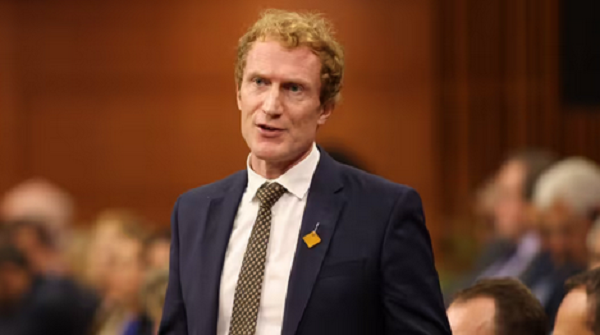Private clinics and insurers warn feds crackdown on user fees will make health care less accessible for millions
Private insurers and virtual health companies are sounding the alarm over a federal promise to penalize provinces that allow private entities to charge patients for medically necessary primary care, saying the move could threaten access to a popular workplace benefit.
Federal Health Minister Mark Holland said last month that he would issue in “short order” a letter clarifying how the Canada Health Act applies to medically necessary care delivered virtually and by health professionals other than doctors, most often nurse practitioners.
His predecessor, Jean-Yves Duclos, first promised to issue an interpretation letter on the matter in March of 2023, in response to an increase in private clinics and virtual-care companies charging subscription, membership or user fees to patients for care that would otherwise be free if provided in person by physicians working in the public system.
Brett Belchetz, chief executive officer of virtual-care provider Maple Corp., said the interpretation letter would make it harder for the estimated 6.5 million Canadians who don’t have a family doctor to get basic care. The company is partly owned by Loblaw Cos. Ltd.
“The whole point of this letter, which is supposedly to ensure better access for Canadians, more fair access for Canadians – it isn’t going to do that,” said Dr. Belchetz, an emergency-room doctor. “All it’s going to do is take something that is actually, finally working in health care and it’s going to take it away.”
The pending interpretation letter re-emerged as an issue last month when the Canadian Medical Association released a draft policy paper on balancing public and private care. Among the CMA’s 22 recommendations was a call for governments to “enforce the Canada Health Act prohibition against user fees by clamping down on jurisdictions that allow the charging of membership fees, user fees or bundled payments.”
For-profit virtual-care companies and private clinics are “putting doctors behind paywalls,” warned Danyaal Raza, a family physician at St. Michael’s Hospital, part of the hospital network Unity Health Toronto, and a past president of Canadian Doctors for Medicare.
“I would argue, and I think many people feel the same way, that that’s a serious ethical lapse,” he said. “It’s not what Canadians expect out of their health care system.”
But many Canadians who rely on paywalled primary care don’t pay the entire tab themselves. About 10 million Canadians now have some coverage for virtual primary care through their workplace benefit packages, according to the Canadian Life and Health Insurance Association. The CLHIA and other lobby groups say they worry a reinterpretation of the Canada Health Act could eliminate those benefits.
“People would now have to start trying even harder to find a family doctor,” said Carolyne Eagan, president of the Benefits Alliance, which represents insurance advisers who craft group benefits plans. “Or they’d have to just start waiting longer and then stop, probably, addressing some issues in a timely manner.”
When The Globe and Mail asked Health Canada how the interpretation letter might affect virtual primary care paid for through workplace plans, spokeswoman Anne Génier said by e-mail that private health insurance is meant to complement the services provided through Medicare.
“It is not meant to allow those Canadians with private insurance through an employer benefit plan to jump the queue for insured health services or to receive preferential or faster access to care over those waiting in the public system,” she wrote.
In Canada, the virtual-care industry – which grew exponentially during the pandemic – operates both inside and outside of the public system. Maple, for instance, has contracts with Nova Scotia, New Brunswick and Prince Edward Island to provide publicly funded primary care virtually, through phone or video appointments, which is free to patients (who already pay for health care through their taxes).
But in other parts of the country, Maple and other virtual telemedicine companies use legal workarounds to charge patients or their private insurers.
Under the Canada Health Act, adopted in 1984, the federal government provides health transfer payments to provinces and territories in exchange for them upholding the principles of Medicare, including the guarantee that patients won’t pay out of pocket for medically necessary services.
If provincial governments permit such charges, Ottawa can – and has – docked their federal transfers until they pass and enforce legislation prohibiting user fees.
But there are loopholes. The Canada Health Act only applies to services provided in hospitals or by physicians, meaning that other health professionals, including nurse practitioners, are free to operate outside of the act and charge patients.
In addition, provincial governments designate services as medically necessary by establishing billing codes for doctors to receive payment through public-health insurance. Services without billing codes are deemed uninsured and considered fair game for private providers.
Some telemedicine companies, such as the Sun Life-owned Dialogue, provide their services through employer-sponsored plans and don’t charge patients out of pocket.
Others, including Maple, do both. For a $79.99 monthly subscription, Maple connects patients to doctors via secure text message, which is not a publicly insured service in most provinces, and provides access to nurse practitioners, along with other uninsured services, such as writing sick notes and delivering prescriptions.
Rocket Doctor, another virtual-care company, charges in Ontario $59 for a text chat with a doctor, and $65 for a video call with a physician assistant, another category of health professional not mentioned in the Canada Health Act.
The company’s platform also facilitates publicly funded virtual care, a service that founder and physician William Cherniak wishes was more widely available, especially in rural Canada. In an interview, Dr. Cherniak emphasized his support for another of the CMA’s recommendations: That “appropriate virtual care services” be publicly funded at the same rates as in-person care.
The rub is what counts as appropriate. Lauren Lapointe-Shaw, an internal medicine physician and researcher at the University of Toronto, said that studies have shown that virtual telemedicine works best when delivered by family doctors who’ve known their patients for years and can examine them in person if need be.
She led an Ontario study that found patients who had a virtual visit with a publicly funded “outside” doctor – likely from a direct-to-consumer telemedicine company – were 66 per cent more likely to visit an ER within seven days compared with those who saw their own doctor virtually.
But that ideal scenario isn’t available to millions of Canadians who can’t find a family doctor, said Dr. Belchetz of Maple.
“Honestly, what I would love is, if the government doesn’t like what we’re doing, if the government doesn’t like the user fees we charge, why don’t [they] outcompete us by making the public system so good that nobody ever has to pay a dollar?” he said. “That would be a dream.”
This article was first reported by The Globe and Mail













